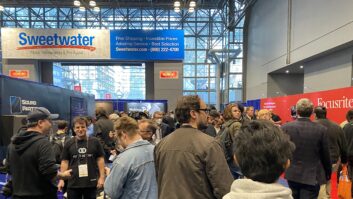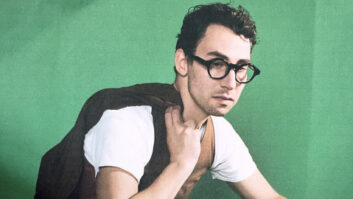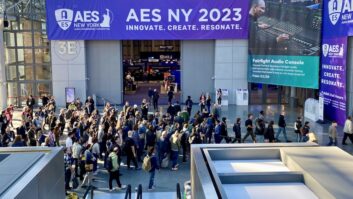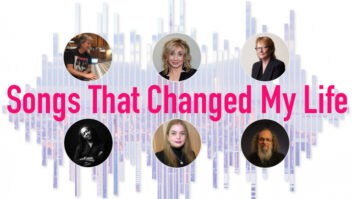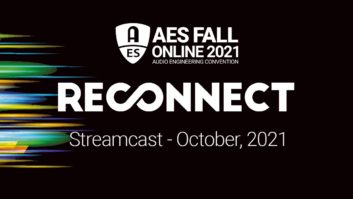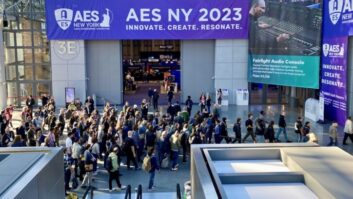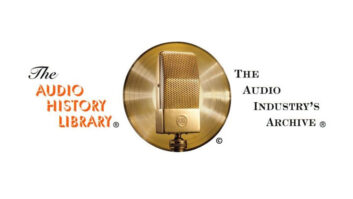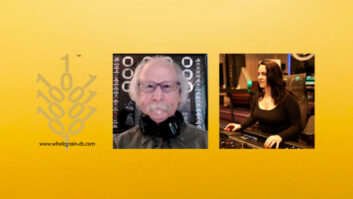iPhone Apps, Digital Cinema, Loudness Standards, “Up-Sampling…” & More
SAN FRANCISCO: Paramount on the ‘not to miss,’ lists of AES Convention regulars, the Workshops Program epitomize pro audio’s extraordinary diversity. Thanks to Workshops Co-Chairs David Bowles and Jeffrey McKnight, 133rd Convention attendees will benefit from a particularly robust program. “Dozens of worthwhile proposals are submitted each year,” says Committee Co-Chair Valerie Tyler. “Our Workshops Co-Chairs final picks will challenge visitors to budget their time in order to maximize their opportunities to expand their knowledge.” The 133rd AES Convention will be held in SF’s Moscone Center, Oct. 26-29.
Highlights of the 133rd AES Convention Workshop Program include ‘mini-tracks’ on Digital and 3D Cinema Sound, Loudness and on Height Channel (an AES 1st):
Cinema Sound in 3D: Chair, Christof Faller, author/co-principal IIusonic, Switzerland – Enlisting many key players currently involved with 3D cinema sound, this panel will outline their 3D Sound strategies, including impact on production and compatibility with legacy equipment, content, and signal format/coding. The workshop will include a discussion on MPEG’s efforts on 3D Sound compatible formats.
Reconsidering Standards for Cinema Sound – Alternatives to ISO 2969: Chair, Brian McCarty, Coral Seas Studios, Australia – ISO 2969 (aka, SMPTE S202), has been a cornerstone of the audio reproduction ‘B-Chain’ for many years. Like the RIAA curve, it was originally implemented to compensate for delivery defects. What are the implications for these standards and the B-Chain, as film shifts to Digital Cinema delivery, with full bandwidth soundtracks?
Post Production Audio Techniques for Digital Cinema and Ancillary Markets: Chair, Brian McCarty, head of the AES Technical Committee on Sound for Digital Cinema & TV – With the film industry’s rapid move to audio distribution in full-bandwidth, multi-channel, discrete format, post-production techniques to provide high-quality audio continue to evolve. This workshop will feature four leading sound post mixers (music, dubbing, and DVD-Audio) discussing changes being implemented.
Loudness Wars – The Wrong Drug? Presenter, Thomas Lund, HD Development Mgr. TC Electronics – Newly produced music rarely sounds good on fine speakers. Could the wrong mastering ‘drug’ have been used for decades, affecting Dynamic Range (DR) instead of Loudness Range (LRA)? Addressing the grim side effects of this question, the panel, will provide a unique perspective on the difference between DN and LRA from a technical, perceptual & practical POV.
Broadcasters Experiences In The Use of Loudness Standards: Lars Jonsson Swedish Radio – With the recent U.S. adoption of the CALM Act, Loudness Standards have reached the tipping point in audience awareness. This Workshop will bring together a group of leading international broadcasters to address the use of new EBU and ATSC standards on loudness.
Acoustics & Audio iPhone Aps: Peter Mapp, Acoustic Consultant, PMA – has designed this Workshop to survey the range of audio and acoustic measurement, calculation and related apps currently available for the iPhone, iPad and other smart phones. A member of the AES Technical Committee on Acoustics & Sound Reinforcement (TCASR), Mapp will review current apps, their uses and limitations
Mastering for Specific Music Genres: Andres Mayo Vice Chairman TC Arms – Mastering projects occasionally require an expert in a music style which has very specific parameters (dynamics, color, warmth, S/N ratio, etc.). Examples include, classical and regional music e.g. Tango, and powerful ‘bassy’ tunes created for clubs. This workshop will review those unique features, and also address mastering for vinyl and iTunes.
The Controversy over ‘Up-sampling,’ Boon or Scam? Vicki Melchior Audio DSP Tech Consultant, Boston – Many ‘high resolution’ Blu-ray, DVD releases, and HD download files are created by ‘up-sampling’ Redbook or 48kHz data. A practice that frequently draws vehement outcries of ‘fraud.’ And yet, ‘up-samplers,’ both hardware and software, are commonly marketed to consumers and professionals with the promise of boosting Redbook Sonics to near-equality with high resolution. What’s going on? A panel of top mastering engineers, DAC and DSP designers will discuss in depth.
Other 133rd Convention Workshop Program Highlights Include:
*Sound Design Tools for Multichannel Audio With Height: Wieslaw Woszczyk McGill U. Center For Interdisciplinary Research In Music Media.
*Recording Music In 9.1 Height Surround: Presenter, Morten Lindberg, Engineer/Producer Lindberg, Lyd.
*3D Audio Formats (Multichannel Sound With Height) Channel or Object Based? Presenter, Bert Van Daele
*Height Channel – Adding The Vertical Dimension To Surround Sound: Chair, Paul Geluso, Teacher, Chief Recording Engineer NYU Steinhardt
Multi-Microphone Applications & Testing In Telecommunications Systems: Bob Zurek Motorola
Spatial Audio Evaluation: Sean Olive, Director, Acoustic Research Harman Intl.
What Does an Object Sound Like? Towards a Common Definition Of A Spatial Audio Object: Frank Melchior, BBC R&D
MUSHA Reloaded: Presenter, Judith Liebetrau, Fraunhofer IDMT
What Every Sound Engineer Should Know About The Voice: Eddy Brixen EBB Consultant
New Delivery Mediums & How To Get There Safely… Or, Jumping On The New Media Express: Jim Kaiser Educator, Belmont U/Engineer, MasterMix, Nashville
Forensic Authentication of Digital Audio: Jeffrey M. Smith
*The Height Channel ‘Mini-Track’ will be held at Pyramind Media & Music Production School/Studio in the Bay Area’s trendy SoMa neighborhood.
In-depth descriptions of all the 133rd AES Conventions are posted on the Preliminary Calendar of Events http://www.aes.org/events/133/calendar/calendar.cfm
Photo: 133rd AES Convention Workshop Co-Chairs Jeffrey McKnight & David Bowles
###
The Audio Engineering Society was formed in 1948 by a group of concerned audio engineers. The AES counts over 14,000 members throughout the U.S., Latin America, Europe, Japan and the Far East. The organization serves as the pivotal force in the exchange and dissemination of technical information for the industry. For additional information visit http://www.aes.org
